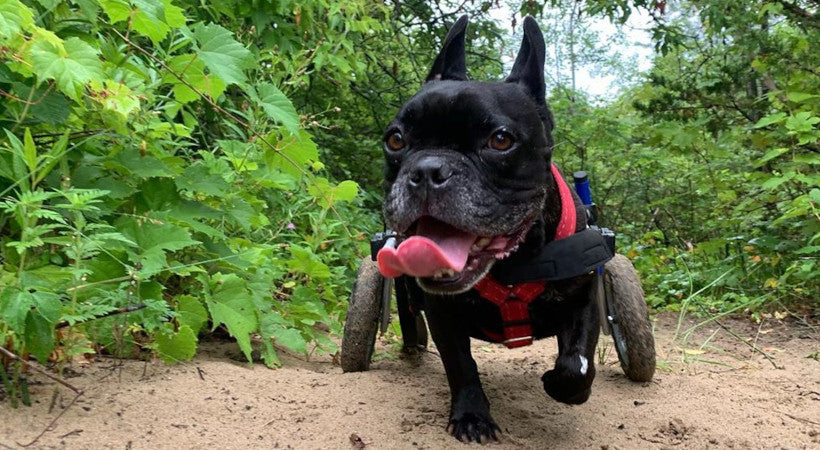Pomeranian Lifespan: How Long Do Pomeranians Live? (Life Expectancy)

Spina Bifida in Dogs
How Spina Bifida Impacts a Dog’s Mobility

Dogs with spina bifida often have spinal arches that impact their rear leg mobility. Although the condition can occur in any part of the spinal column, it typically affects the lower back, many spina bifida dogs experience rear leg weakness or paralysis, uncoordinated movements, and incontinence issues. Many spina bifida puppies are born with a noticeable divot or dimple in their back along their spine.
Most dogs with spina bifida will show signs at a very young age usually when they first start walking. Paralysis may not be apparent until the spinal column lengthens and grows. As the spine lengthens, tension increases along the spine causing paralysis and atrophy.
Cats with spina bifida experience similar signs and mobility struggles as dogs do. Spina bifida cats may have leg weakness, paralysis, seizures, and other signs of a neurological condition.
What Causes Spina Bifida in Puppies?
Spina bifida is a congenital condition involving the formation of the vertebrae. The condition begins before birth, usually as an embryo develops in the womb. In spina bifida cases, a dog's spinal column does not form properly leaving part of the spine exposed. Often creating spinal arches that impact several vertebrae to not fuse together leading to mobility problems in puppies and difficulty walking. Causes of canine spina bifida may include:
- Genetics
- Stress in utero
- Nutritional imbalance
- Environmental toxins
Puppies and kittens will show signs of the condition as they first start to move, usually in the first or second week after birth. English Bulldogs and French Bulldogs are the most common breeds to develop spina bifida. In cats, spina bifida is most often seen in the Tailless Manx. Manx cats are genetically predisposed to the condition and may be caused by a gene mutation of a non-tailless cat.
What to Expect in Your Spina Bifida Dog
Caring and treating for a spina bifida pup requires patience and time. But there is no reason why your dog can't go on to live a relatively normal and active life.
Incontinence
Maintaining proper hygiene is critical to the care of a puppy with spina bifida. Dogs with this condition can experience both fecal and urinary incontinence. Your dog may need to wear diapers while inside the house. Male wraps work well for urinary incontinence in male dogs. However, females usually have more success with a traditional diaper.
Incontinent dogs need to be watched closely. Diapers should be changed frequently to avoid urinary burns, infection, and prevent frequent or recurring urinary tract infections. It can be especially challenging to keep dogs dry overnight. Specially made mesh dog beds, allow urine to flow freely away from your dog's sensitive skin into a tray beneath them. This helps lower the risk of urinary burns and avoid hygiene issues caused by wearing a diaper for an extended period.
Mobility Assistance
Due to ataxia (lack of coordination) and possible leg weakness and paralysis many spina bifida pets require the aid of a cart or dog wheelchair to stay active. Wheelchairs provide them with additional support, allowing them to stand upright and run and play like any other puppy. For those struggling with balance issues, a four-wheel wheelchair provides even more stability.
Although, spina bifida dogs may need to rely on a wheelchair for their entire life, there is no reason why they can't live an active life.
Physiotherapy and Rehabilitation
Canine rehabilitation exercises promote strength and conditioning, to help dogs improve their balance and coordination as they gain strength. Hydrotherapy and rehab are effective ways to improve mobility and overall quality of life. Physical therapy is especially important for dogs with spina bifida to help maintain and increase their muscle tone. Stem cells treatments for spina bifida have shown great promise, but this has not become a regularly recommended treatment option for dogs with spina bifida yet.
Although, they may require more of your time and attention spina bifida dogs can expect to live a normal life. Their needs may be different, but they make incredible and loving pets. With a little bit of extra care and attention your pet should live a normal, active life.










